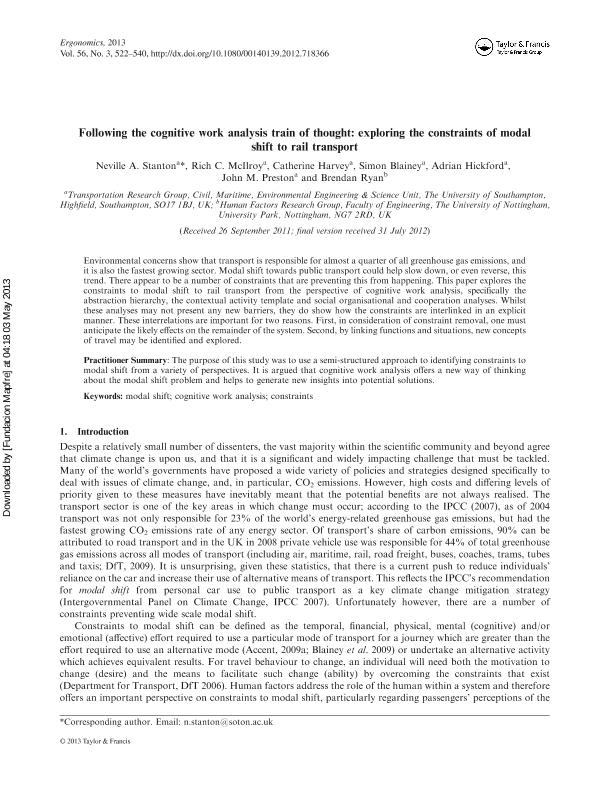Following the cognitive work analysis train of thought : exploring the constraints of modal shift to rail transport

Contenido multimedia no disponible por derechos de autor o por acceso restringido. Contacte con la institución para más información.
| Tag | 1 | 2 | Valor |
|---|---|---|---|
| LDR | 00000cab a2200000 4500 | ||
| 001 | MAP20130014470 | ||
| 003 | MAP | ||
| 005 | 20130506123041.0 | ||
| 008 | 130503e20130304esp|||p |0|||b|spa d | ||
| 040 | $aMAP$bspa$dMAP | ||
| 084 | $a875 | ||
| 245 | 0 | 0 | $aFollowing the cognitive work analysis train of thought$b: exploring the constraints of modal shift to rail transport$cNeville A. Stanton...[et.al] |
| 520 | $aEnvironmental concerns show that transport is responsible for almost a quarter of all greenhouse gas emissions, and it is also the fastest growing sector. Modal shift towards public transport could help slow down, or even reverse, this trend. There appear to be a number of constraints that are preventing this from happening. This paper explores the constraints to modal shift to rail transport from the perspective of cognitive work analysis, specifically the abstraction hierarchy, the contextual activity template and social organisational and cooperation analyses. Whilst these analyses may not present any new barriers, they do show how the constraints are interlinked in an explicit manner. These interrelations are important for two reasons. First, in consideration of constraint removal, one must anticipate the likely effects on the remainder of the system. Second, by linking functions and situations, new concepts of travel may be identified and explored. | ||
| 773 | 0 | $wMAP20100019818$tErgonomics : the international journal of research and practice in human factors and ergonomics$dOxon [United Kingdom] : Taylor & Francis, 2010-$x0014-0139$g04/03/2013 Volumen 56 Número 3 - marzo 2013 , p. 522-540 |

